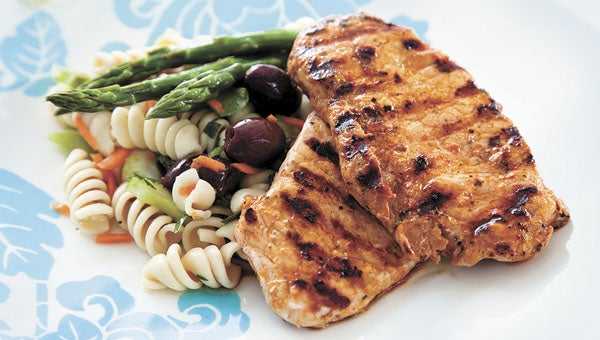It’s the little things that count
Published 8:05 pm Saturday, August 21, 2010
Little healthy eating choices can go a long way
The battle to healthier eating is fought plate by plate, bite by bite.
It can become wearisome and defeating when you don’t see the results — whether it’s on the scale or on a doctor’s report — you’re working so hard to achieve.
Research and education specialist for Optima Health Joan Sechrist, Ph.D. and R.D., explained that it is often the little things that count.
“Three things that really end up having a big impact is portion size, preparation methods and fresh versus processed foods,” Sechrist said. “Unless you’re aware of the differences they can be easy to miss.”
One of the biggest “little differences” to watch isn’t what is on your plate, but rather how much of it is.
“Over the years, our portion sizes have grown and grown,” Sechrist said. “We can be getting all the right kinds of foods, but there is such a thing as too much of a good thing.”
For example, steaks are often served in four ounce or eight ounce cuts, “but you should only have five and a half ounces of meat every day, not in a single meal,” Sechrist said. “Even at fast food restaurants, the portion can be 10 ounces.”
The way the food on your plate is prepared is something else to keep an eye on.
“The minute you’re frying or adding sauces something, you’re adding fat, sodium and the calories add up pretty quickly,” Sechrist said. “When you bake, broil or grill, you’re just raising the temperature.”
When baking, broiling or grilling you should be aware of what you’re coating something in, as well.
“Pam spray will have the least amount of fat and calories,” Sechrist said. “Olive oil and butter will have the same amount of calories, but olive oil has no trans fats or saturated plants and is heart healthy because their monounsaturated fats help lower blood cholesterol. Butter is just packed with cholesterol, and margarine has trans fats, which aren’t calorie heavy, but can raise blood cholesterol.”
For the one in three Americans who have high blood pressure, teriyaki and soy sauces may be lower in calories, but they’ll add sodium to a meal.
A small scoop of gravy will add 100 calories to an otherwise healthy baked potato.
“Just because it’s a liquid, doesn’t mean it doesn’t have calories,” Sechrist said. “Dressings and gravies can be the worst offenders. Half the calories from most dressings are from the fat. You can get a perfectly healthy salad and the little two ounce packet of dressing they give you can add 200 calories in an instant.”
Using fat free dressings, vinaigrettes or mixing your own with garlic, onion, spices, vinegar and olive oil are a good alternative, Sechrist suggested.
Just as dressings aren’t created equal, neither are fruits and vegetables.
“You’ve got to be careful when substituting fresh fruits and vegetables for processed ones,” Sechrist said. “If you eat a half a cup of apple sauce instead of an apple, you lose all the fiber in the skin and gain all the sugar they add.”
The same is true for hamburger meats at restaurants, which often contain calorie-laden sauces, and fruits in syrup.
“If you can prepare it yourself, it’s always safer,” Sechrist said. “Frozen vegetables are also often a good choice. You can buy them or do it yourself. They don’t lose their nutrition.”
Staying in tune to what size your portion is, how your food is prepared and how it has been processed may just help keep your body (and doctor) happy.



